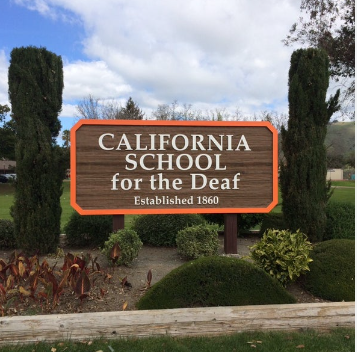Written By: Miles Watts, Staff Writer
IMPACT: An exploration on how the Deaf community has impacted Riverside and has left its print on the city.
Riverside has a very prominent community of deaf and hard-of-hearing people. It is one of the reasons why Poly High School, Martin Luther King high School and RCC offer ASL classes for people to learn about their culture. The deaf population and its culture is a defining part of what makes Riverside unique. This community is one of the largest in the country and it has been a thriving public since 1953. It is not unlikely that one in Riverside has encountered a deaf person before; despite the strong presence of deaf culture, many people are unsure of how to interact with them and think of them as disabled. However, most in the community would disagree and are willing to communicate with hearing individuals on how to treat them right.
Origin
The reason that there is such a strong deaf community in Riverside is because of the founding of the California School for the Deaf Riverside, or CSDR. Started in 1953, it was the second Deaf school in California (the first one being in Berkeley) which prompted an influx of people to the city who were in need of this specialized educational experience. Although there are newer institutions in Fremont and the Bay area, more deaf members are moving to Riverside due to the cost effectiveness of living in the Riverside area.. It is on Arlington Street between Horace and Maude, and it houses dormitories for people from farther parts of California to stay on campus. Without the school, there would not be such a strong presence of Deaf people in Riverside. “This community brings a whole new language, traditions, and viewpoints [which adds] rich layers to Riverside’s cultural fabric” comments Adrian DeHoyos, one of the ASL teachers at Poly. He had lived in Phoenix, Arizona for thirteen years and was surprised to see the difference from there to here. “People in Riverside just get deaf culture more. There’s a warmth here, and a surprising number of folks know at least some sign language,” Mr. DeHoyos explained.
Impact
As aforementioned, the presence of the deaf population provides a deeper sense of their culture to hearing people versus if they were in a different city (although there are still misunderstandings). Since there are so many deaf people in Riverside, it is common for a hearing person to know at least one. As an example, our Principal, Mr. Hansen actually moved to Riverside as a child with his family, because one of his siblings is deaf. The City of Riverside has adopted a Commission for the Deaf which strives to make sure deaf voices are heard and their concerns addressed. The commission dives into crucial issues for the Deaf community and will allow for a stronger integration between the hearing and Deaf world. CSDR’s football team has also garnered quite a nam, as they won 11 undefeated games two years ago but lost the championships; the next season they won the championship and they did the same thing again the year after. Such a comeback after struggling as a team had surprised people and showed the hearing population that a Deaf person can do everything a hearing person can but hear.
Treatment
Although there is such a prominent deaf community in Riverside, they still face prejudice and audist remarks. Audism is a discriminatory thinking where one thinks that Deaf or hard of hearing people are inferior to hearing individuals. Whether one does it intentionally or not because they do not know what is rude, it still impacts deaf people negatively. In the past, terms such as “deaf and dumb”, “deaf-mute”, or “hearing-impaired” were used but now they are seen as inaccurate and offensive as it implies that there is something missing with them when in fact Deaf people feel that their Deafness is a integral part of their identity. Using “Deaf” instead of the other terms is a much better way to refer to them. Miscommunication between a hearing and Deaf person is often the crux for proper communication, and a way to combat this is by “[Getting] a paper and pen out and [letting] them write what they ask for”, which is what Matt Bayarsky-Cerar recommends. He is another ASL teacher at Poly and has faced audism and miscommunication first-hand. Empathy, understanding, and patience are also pivotal assets for one to have when interacting with deaf people. Another way to fight audism is by advocating for technologies and enforcements that make it easier and more comfortable for Deaf individuals. They are an integral part of Riverside and it is vital to make them feel valued and included.
which shows audism and the
oppression of Deaf people.
Conclusion
Riverside’s Deaf population is a prominent and prevalent community that is an essential part of the city’s culture and history; it would not be the same without their presence. Despite the struggles against oppression and audism, they still have a place in Riverside. Their home here is a crucial one, as it is one of the largest groups of deaf people in the U.S. Despite being a minority group, they are a loud and lively community with a rich and deep history and culture which should be acknowledged and celebrated.
